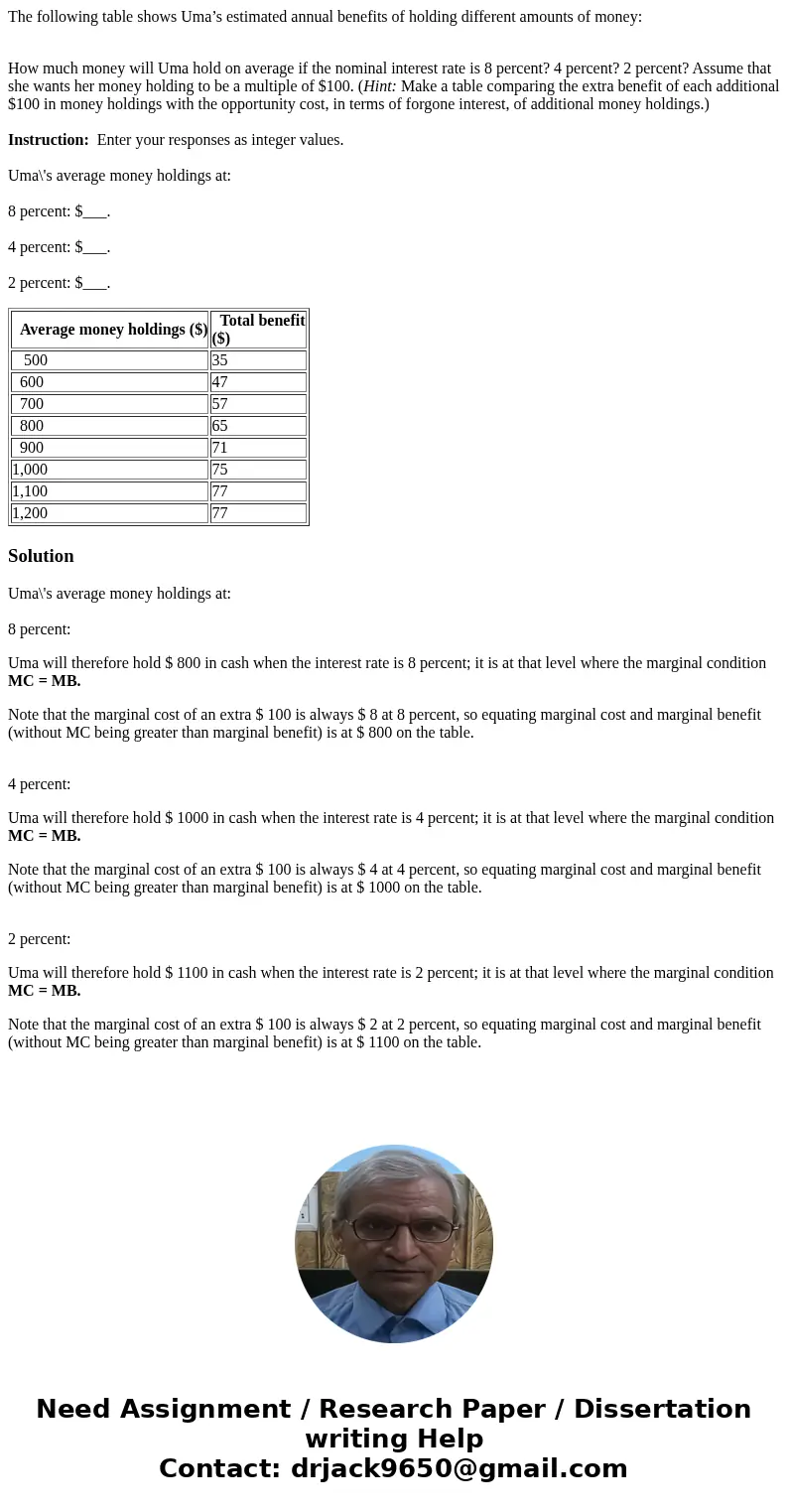The following table shows Umas estimated annual benefits of
The following table shows Uma’s estimated annual benefits of holding different amounts of money:
How much money will Uma hold on average if the nominal interest rate is 8 percent? 4 percent? 2 percent? Assume that she wants her money holding to be a multiple of $100. (Hint: Make a table comparing the extra benefit of each additional $100 in money holdings with the opportunity cost, in terms of forgone interest, of additional money holdings.)
Instruction: Enter your responses as integer values.
Uma\'s average money holdings at:
8 percent: $___.
4 percent: $___.
2 percent: $___.
| Average money holdings ($) | Total benefit ($) |
| 500 | 35 |
| 600 | 47 |
| 700 | 57 |
| 800 | 65 |
| 900 | 71 |
| 1,000 | 75 |
| 1,100 | 77 |
| 1,200 | 77 |
Solution
Uma\'s average money holdings at:
8 percent:
Uma will therefore hold $ 800 in cash when the interest rate is 8 percent; it is at that level where the marginal condition MC = MB.
Note that the marginal cost of an extra $ 100 is always $ 8 at 8 percent, so equating marginal cost and marginal benefit (without MC being greater than marginal benefit) is at $ 800 on the table.
4 percent:
Uma will therefore hold $ 1000 in cash when the interest rate is 4 percent; it is at that level where the marginal condition MC = MB.
Note that the marginal cost of an extra $ 100 is always $ 4 at 4 percent, so equating marginal cost and marginal benefit (without MC being greater than marginal benefit) is at $ 1000 on the table.
2 percent:
Uma will therefore hold $ 1100 in cash when the interest rate is 2 percent; it is at that level where the marginal condition MC = MB.
Note that the marginal cost of an extra $ 100 is always $ 2 at 2 percent, so equating marginal cost and marginal benefit (without MC being greater than marginal benefit) is at $ 1100 on the table.

 Homework Sourse
Homework Sourse